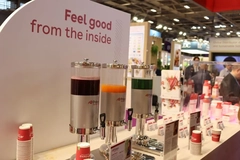BEUC Demands Bolder EU Action on Alcohol Calorie Labelling

16 Feb 2015 --- According to the consumer group, BEUC, at present, consumers can know the amount of calories and the ingredients in a bottle of milk or fruit juice, but they don’t have a clue about what a bottle of whisky or beer contains. Few of them are aware of the fact that an average half litre of beer (5% alcohol) contains approximately 220 calories, the equivalent of a chocolate bar.
Because consumers have the right to know what's in their drinks, BEUC has sent a letter to the EU Commissioner for Food and Health, Vytenis Andriukaitis, asking to step up action on alcohol labelling.
The European Commission has been delaying the adoption of its own report on labelling requirements for alcoholic beverages which was due in December last year. It was also expected to propose a definition of ‘alcopops’, those flavoured alcoholic beverages which can contain up to 21 grams of sugar.
“BEUC can see no good reason why alcoholic drinks should be treated differently. Labelling nutritional info and the full list of ingredients should be mandatory to help consumers know what and how much to drink,” the group claims.
The debate around calorific transparency began to move towards alcohol in the UK at the end of last year. Obesity is a global epidemic: in England, for example, a quarter of adults are obese, while in the US the proportion is 35%. Adults who drink get around 10% of their total calories from alcohol.
The Royal Society for Public Health, a British nonprofit organization recently released a report calling for alcohol products in the EU to be labeled with caloric information. The survey showed that two thirds of British adults want calorie labeling on their alcoholic drink packaging. 80 percent of the 2,000 surveyed consumers said they do not know the calorie content of a glass of a wine. 90 percent of respondents also incorrectly guessed the calorie content of a pint of lager. Apparently, a glass of wine (175ml) with 13% ABV contains 160 calories while a pint of lager with 4 percent ABV has 180 calories.
67 percent of the respondents support calorie labeling. According to EU health commissioner Vytenis Andriukaitis, the result of the survey will help the European Commission to decide whether to put nutritional labeling on alcoholic beverages. Alcoholic drinks do not need to add nutritional labeling because it is not considered a food. RSPH chief executive Shirley Cramer recognized the importance of alcoholic labeling saying that alcohol labeling will help individuals to make better choices when it comes to what they will intake.
A move such as this would be welcomed by retailer Sainsbury’s, who have taken somewhat of a lead on calorific labeling on alcohol products. The ABV information on Sainsbury’s own brand wines is printed in large font, positioned on the left hand side of the front label, making it as clear as possible for customers. “Sainsbury’s has always championed simple, clear nutritional labeling across all own label food and drink products – we were the first to use traffic light labeling on front of pack nine years ago,” the retailer claims.
Sainsbury’s recently announced the removal of nearly one million units from customers’ annual alcohol consumption through the reformulation of our Taste the Difference Prosecco Conegliano. The sparkling wine’s average alcohol content (ABV) has been reduced from 11% to 10.5%, “without compromising on taste.” As part of the retailers’ 20x20 commitments, Sainsbury’s has pledged to double the sales of lighter alcohol wines by 2020. Sainsbury’s Taste the Difference Prosecco is a DOCG status wine, sourced from the heartland of the Conegliano region and made by Cantine Riunite. It’s the biggest selling Taste the Difference drinks line and is available in a number of formats – 75cl bottle, a 1.5l magnum, a 20cl single serve and a 37.5cl half bottle – making it suitable for a variety of customer needs and occasions.












